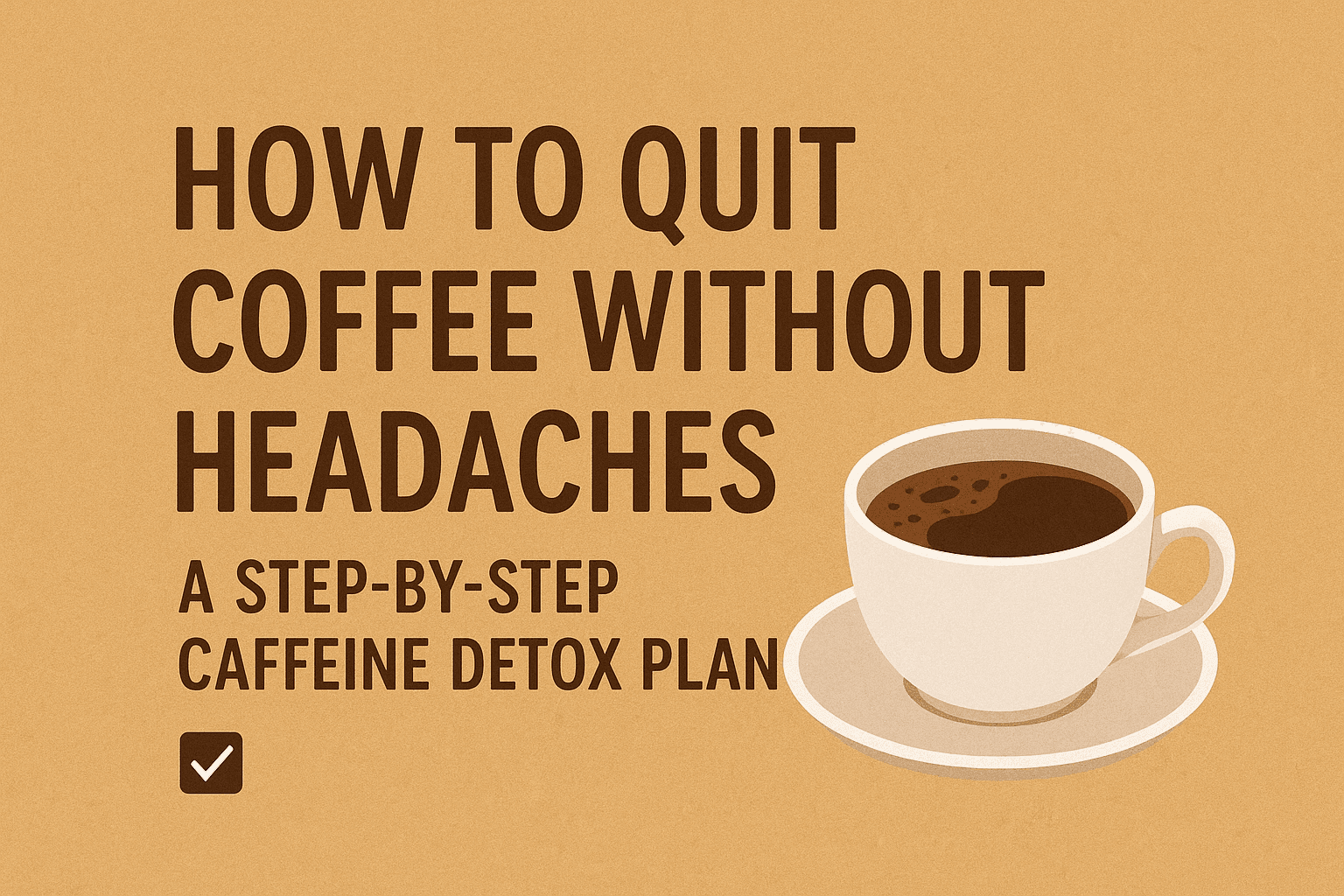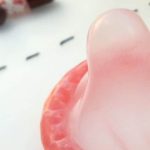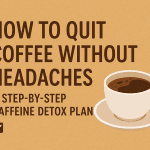![]()
How to Quit Coffee Without Headaches
Why Quitting Coffee Cold Turkey Hurts
Caffeine hides sleepiness by blocking adenosine, a brain chemical that accumulates during the day and signals your body to rest. Over time, regular caffeine use causes the brain to increase adenosine receptors, meaning you need more caffeine to feel alert. When you stop suddenly:
- Adenosine floods your brain, producing extreme tiredness.
- Brain blood vessels dilate, causing withdrawal headaches.
- Your nervous system reacts with irritability and anxiety.
So instead of shocking your system, tapering caffeine intake allows gradual rebalancing—minimizing headaches and other withdrawal symptoms.
The Gradual 4-Week Caffeine Detox Plan
Note: This sample program assumes ~3 cups of coffee per day. Adjust the portions up or down to match your current intake.
Week 1—Gentle Reduction (Cut ~25%)
- Days 1–3: 2 cups regular coffee + 1 cup decaf.
- Days 4–7: 1 cup regular (morning) + 1 cup decaf + 1 cup green tea.
Goal: Reduce total caffeine while keeping the ritual intact so withdrawal remains mild.
Week 2—Balance with Tea & Decaf
- Days 8–10: 1 small cup regular (morning) + 2 cups decaf/green tea.
- Days 11–14: Half cup regular (mix half coffee + half decaf) + 2 cups decaf/tea.
Goal: Teach your body to function with minimal caffeine and reduce receptor dependence.
Week 3—Almost Coffee-Free
- Days 15–17: 1 cup green tea (morning) + 2 cups decaf/herbal tea.
- Days 18–21: 1 cup decaf only + herbal teas for the rest of the day.
Week 4—Full Reset
- Days 22–24: 1 cup decaf in the morning + herbal teas.
- Days 25–28: 100% caffeine-free: herbal teas and natural energy practices.
By the end of Week 4 your body can reset and adapt to life without daily caffeine dependence.
Coffee Alternatives That Make the Transition Easier
Part of quitting is replacing the ritual—the warmth of a mug or the morning pause. These alternatives provide comfort and gradual stimulation without the big caffeine hit:
- Green tea/matcha: Gentle caffeine plus L-theanine for calm focus.
- Yerba Mate: Smooth, steady energy with less jitteriness.
- Decaf coffee: Keeps taste and habit without strong caffeine.
- Herbal teas (chamomile, peppermint, rooibos): Caffeine-free and soothing.
- Golden milk (turmeric latte): Warm, anti-inflammatory, and relaxing.
Natural Ways to Boost Energy Without Coffee
Expect some energy dips—especially early on. These strategies help sustain energy naturally:
- Hydrate: Dehydration worsens fatigue and headaches. Aim for 8–10 glasses/day.
- Morning sunlight: 10–15 minutes of natural light after waking helps reset circadian rhythm.
- Short movement breaks: A 10-minute walk or stretching raises circulation and alertness.
- Balanced meals: Oats, eggs, nuts, fruits, and greens stabilize blood sugar and energy.
- Breathing & meditation: Deep breaths increase oxygen and reduce withdrawal anxiety.
- Prioritize sleep:Aim for 7–8 hours—without caffeine masking tiredness, sleep becomes your true energy source.
How to Prevent Withdrawal Headaches
Headaches are the most common withdrawal symptom. Reduce the risk with these steps:
- Taper caffeine gradually—don’t quit suddenly.
- Keep well-hydrated throughout the day.
- Eat magnesium-rich foods (almonds, spinach, and pumpkin seeds) to relax blood vessels.
- Use cold compresses or peppermint oil on temples for relief.
- If headaches persist, sip a small cup of green tea rather than returning to full-strength coffee.
Long-Term Benefits of Quitting Coffee
After 3–4 weeks many people notice clear improvements:
- Better, deeper sleep
- Reduced anxiety and jitters
- More stable, consistent energy throughout the day
- Less digestive irritation and acid reflux
- Whiter teeth and fewer stains
- Money saved from fewer café visits
Final Thoughts & Next Steps
Quitting coffee doesn’t mean losing your morning ritual. It’s about trading dependence for healthier, more reliable ways to feel alert and focused. With a slow, 4-week taper and simple lifestyle supports—hydration, sunlight, movement, and better sleep—you can stop drinking coffee without painful headaches or long-term cravings.
Ready to start? Begin Week 1 today: switch one of your daily cups to decaf, and add a 10-minute morning walk. Small changes add up quickly.
For more diet and fitness information: click here














